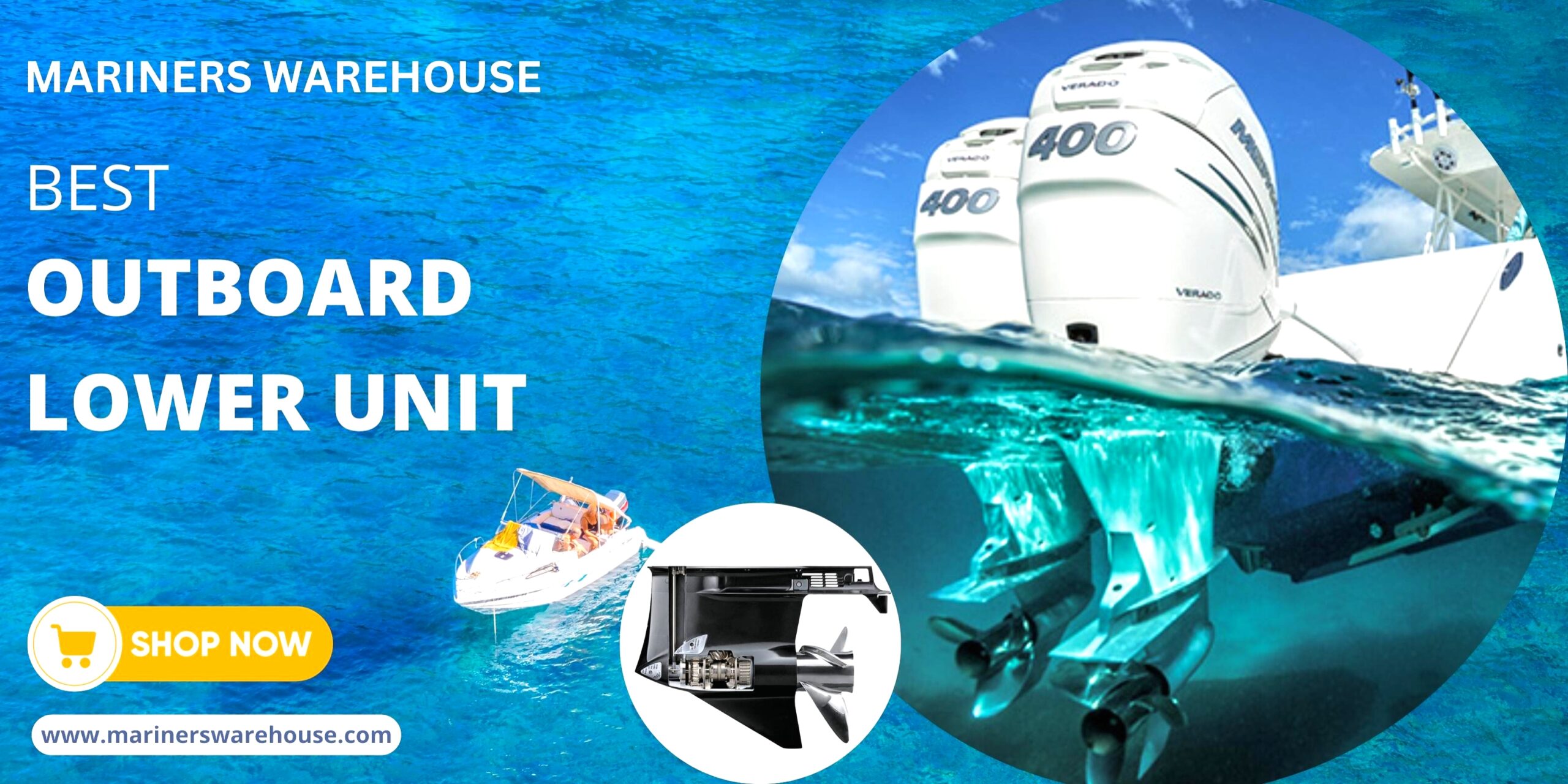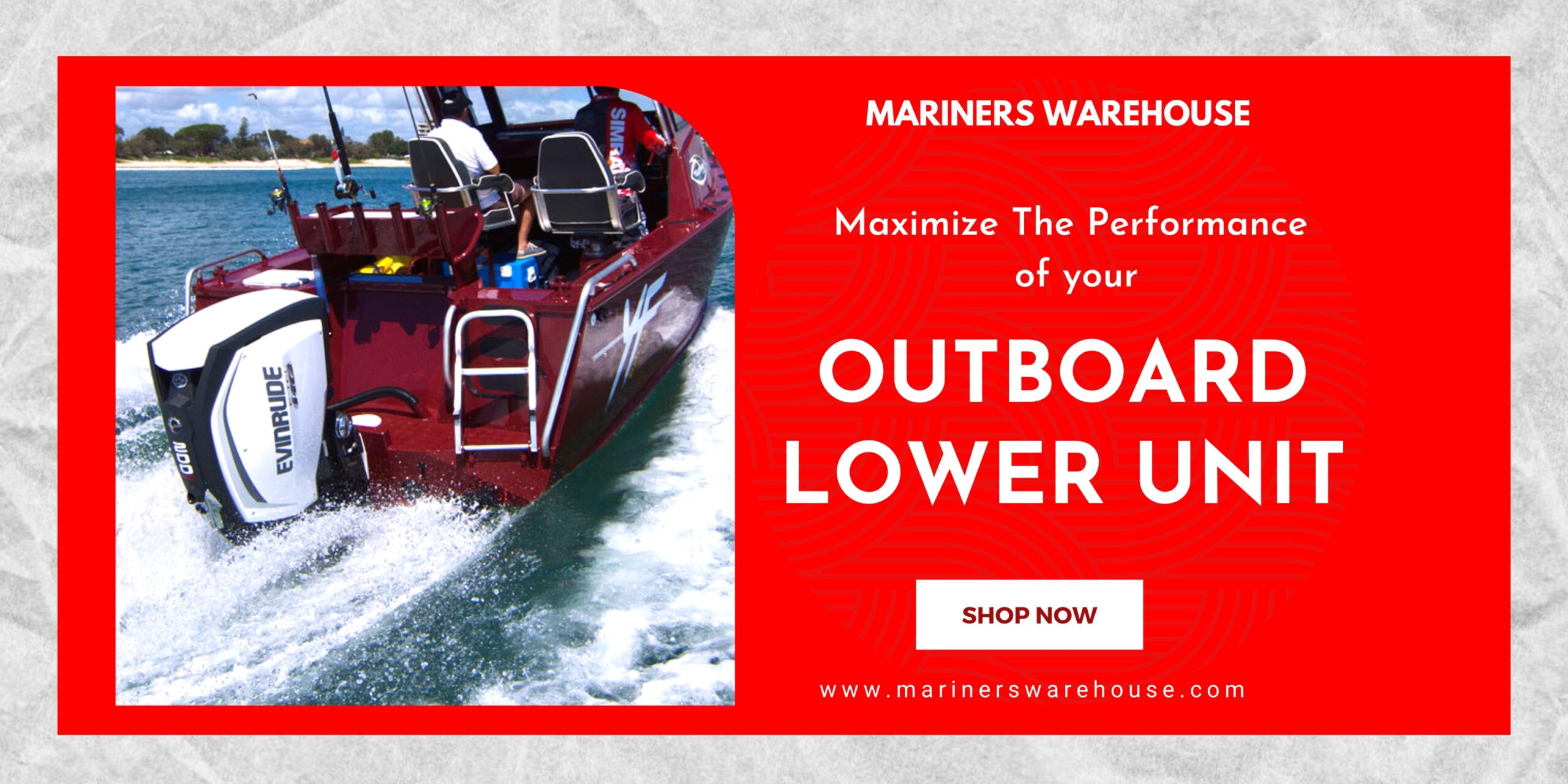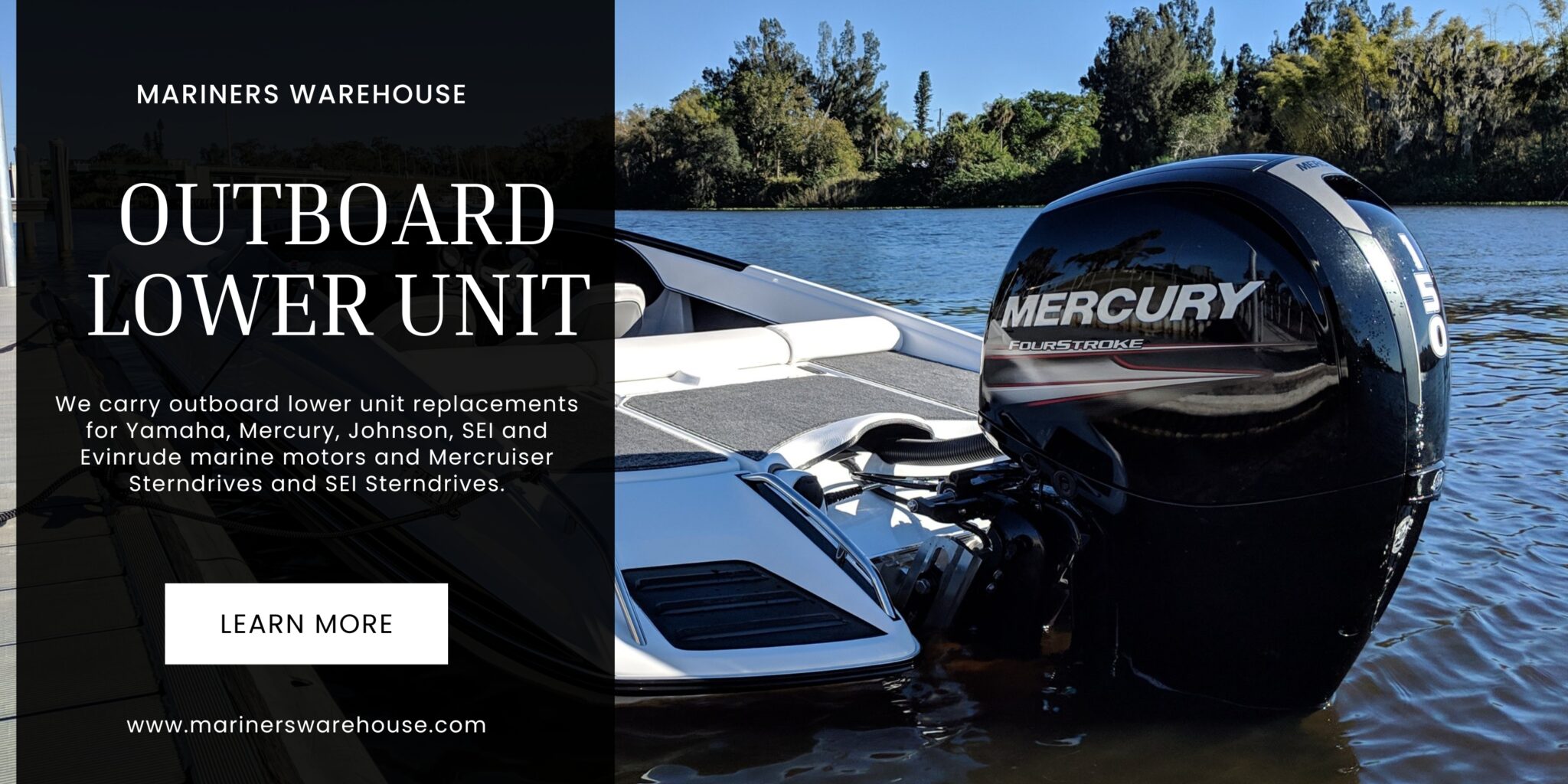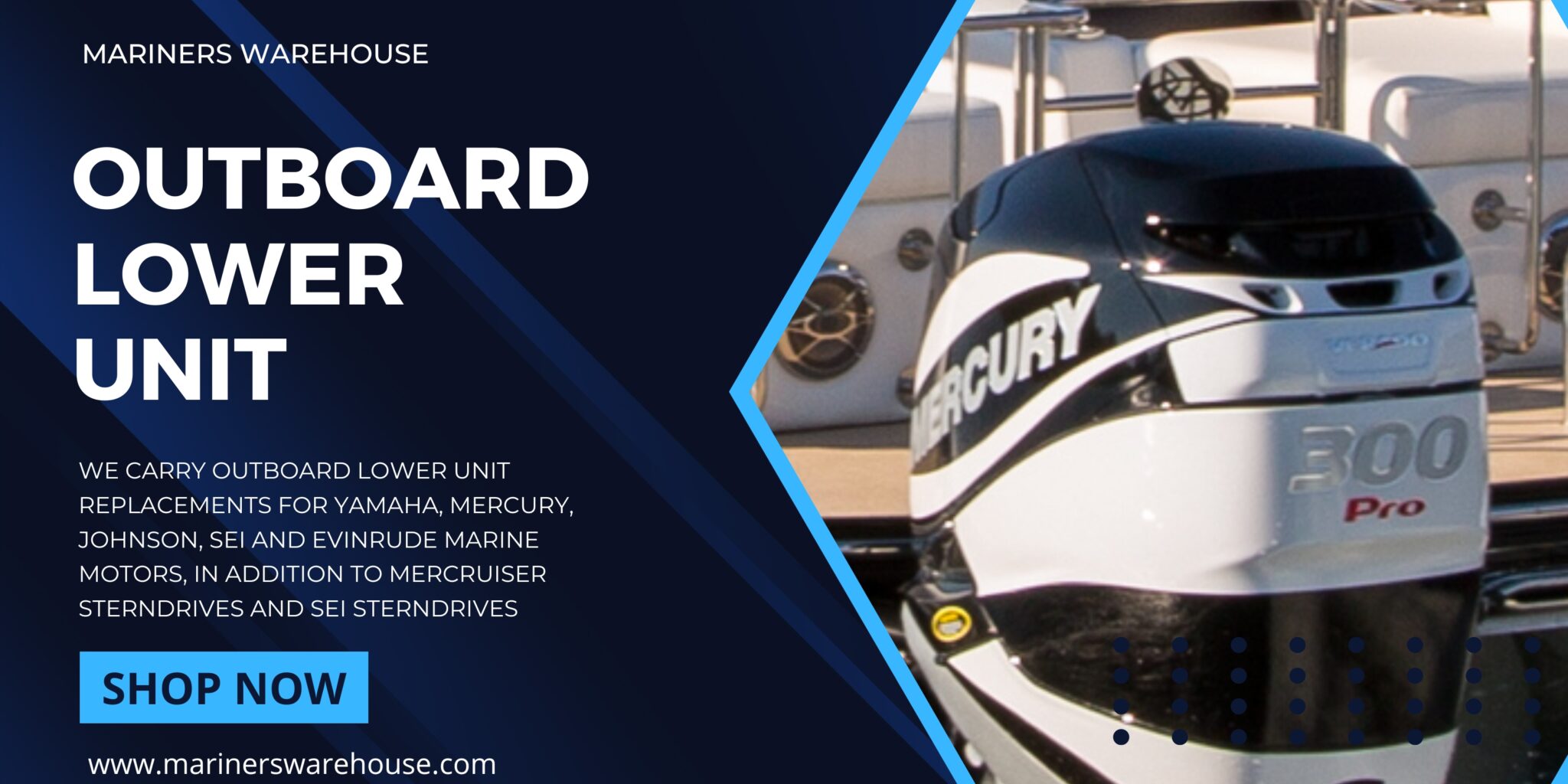
You know that protecting your outboard lower unit from saltwater damage is essential for keeping your boat running smoothly and safely, but what are the best ways to do so? Let your creativity run wild and explore the various possibilities! There are many creative ways to protect your lower unit from treacherous saltwater, from simple methods to protective covers and innovative solutions. Explore your options and go with your fancy to get the ideal boating solution.
Saltwater damage and how it can affect outboard lower units?
Saltwater damage can be devastating for boaters and the equipment they rely on. In particular, outboard lower units are highly vulnerable to saltwater damage, as they are constantly immersed in the corrosive properties inherent to marine environments. And without prompt and effective remedial action, saltwater damage can cause severe and costly damage to outboard lower units. Prevention is always the best course of action regarding saltwater damage. Outboard owners should ensure their engines and sei lower units receive regular inspections and maintenance. Particular attention should be paid to the trim and tilt mechanisms and the external portion of the sei lower unit. To keep saltwater damage at bay, regularly applying an appropriate anti-corrosion product to all metal parts of the engine and lower unit is also advisable.
However, if saltwater damage is left unchecked, it can cause sei lower units to experience corrosion, hex-key stripping, and residue buildup. Corrosion caused by saltwater can cause significant damage to the lower unit’s seals and shifts, making it hard for the outboard motor to operate effectively. Additionally, hex key stripping due to saltwater damage is another common issue, meaning the lower unit can no longer be properly connected to the engine, resulting in a lack of power and other operational issues. Lastly, residue buildup can occur due to the combination of sand and saltwater, clogging up the cooling passages of the lower unit and preventing the outboard motor from cooling efficiently.
Saltwater damage is an unavoidable element of boating. Still, with a few preventive measures, you can ensure that your outboard mercury lower unit is protected against the corrosive properties of saltwater environments. Carry out regular checks and maintenance, apply an antifouling product to metal parts regularly, and ensure you’re always taking the necessary steps to keep saltwater damage at bay.
Long-term Effects of Saltwater Damage on the Performance and Lifespan of the Outboard Lower Unit
Your reliable outboard’s lower unit may not fare well in saltwater. Damage from saltwater corrosion can be costly and difficult to predict, but it can be lessened with education and preparation. You might expect poor engine performance, overheating, and a loss of thrust from your outboard lower unit after prolonged use in saltwater. Metal and plastic parts in the lower unit deteriorate quickly due to seawater corrosion. Cracks, perforations, and pinholes in the metal caused by exposure to saltwater can let water enter the bottom unit, where it can do even more harm.
The good news is that the outboard Yamaha lower unit may be protected from saltwater damage with routine maintenance and cleaning. Flushing the motor with a freshwater flush kit after every usage in saltwater is one of the most effective preventative methods since it removes any remaining salt, debris, or corrosion. Further, if you plan on using your outboard in brackish or saltwater for an extended period, you should have the lower unit water pump inspected and replaced. It is also strongly advised that the lower unit be rinsed with fresh water after being used in saltwater.
Damage caused by seawater may be dangerous and expensive in the long run. Moreover, if the outboard Yamaha lower unit has been severely corroded by seawater, it may need to be replaced. This, of course, results in a huge, unanticipated cost and a high bill for repairs.
How to Protect Your Outboard Lower Unit From Saltwater Damage
If you own an outboard lower unit or sei lower unit, it is your responsibility to provide it with the protection and maintenance it needs to last for a long time. Saltwater is especially damaging to outboard lower units, so if you intend to take it out to sea, there are several steps to protect it from saltwater damage. Here is how to protect your outboard lower unit from saltwater damage and keep it running strong for years to come:
Properly Flush and Clean the Outboard Lower Unit
After each use, the outboard should be flushed and cleaned with fresh water to remove any salts, debris, or dirt lingering around. This should be done before storage and before heading out to sea again.
Apply Protective Coatings or Sprays
To protect the outboard motor against corrosion, use marine oils and protectant sprays like WD-40® or CorrosionX®. These sprays are designed to displace water and protect metal surfaces from corrosion and wear.
Regularly Inspect and Maintain the Outboard Lower Unit
It’s important to keep your Yamaha outboard lower unit serviced and regularly inspected by a qualified mechanic to detect any potential issues caused by saltwater. To ensure the outboard is kept in top form, inspect all components for wear, replace any worn parts and flush out and clean the system whenever a procedure is due.
Store the Outboard in a Dry, Protected Area
Storing an outboard in a dry, climate-controlled area such as a garage or boat shed will help keep saltwater away from the unit and protect it from extreme weather conditions.
Use the Right Types of Lubricants and Fluids
Always use the right lubricants and fluids when working on the outboard. Check the owner’s manual for correct specifications, and never substitute inferior products.
Being proactive with preventative maintenance and following these best practices will help protect your outboard lower unit from saltwater damage. Remember the basics! Keep your outboard clean, regularly inspect and maintain it, apply protective coatings, and store it in a dry, protected area.
Importance of Regular Maintenance and Inspections to Prevent Saltwater Damage
Maintaining and inspecting your home or business to prevent saltwater damage should be a top priority for any coastal dweller. Saltwater can corrode and weaken your building’s structure and foundation, potentially costing and affecting your property’s value. Regular maintenance and inspections are the best way to protect your property from saltwater damage and peace of mind that your home or business is safe. Visually inspect your home for paint or stucco discoloration around windows, doors, and sills. Check for signs of moisture seepage or dampness, as well that may be indicative of water intrusion. Look out for rusty nails, screws, or metal parts.
If you detect saltwater damage signs in your mercury lower unit, diagnosing and repairing it as soon as possible is important. Start by diverting the water away from the foundation with draining systems or downspouts. You can also use water-resistant paints, caulks, and sealants to prevent water entry. If the damage is more severe, hiring a professional to inspect and remedy the damage is the right course of action. Finding the right professional for saltwater damage repair is important. Find a contractor specializing in coastal homes and businesses, and get references. Checking reviews on Google is also a great way to compare services from different plumbing contractors.
From simple visual inspections to professional damage repairs, understanding how to properly maintain, inspect, and repair saltwater damage is key to protecting your home or business. By taking proactive measures, you can reduce the overall costs associated with saltwater damage and ensure the safety and value of your coastal property.
Final thoughts
We’ve discussed the best ways to protect your Yamaha outboard lower unit from saltwater damage: paying attention to the location of your engine, flushing, and cleaning, using a sacrificial anode, and regular maintenance. These proactive steps will help keep your engine safe and running optimally. Put forth the effort now, and you’ll save time and money down the road! In the end, you’ll have peace of mind knowing that your outboard engine is protected and ready to take on whatever saltwater comes it’s way.




